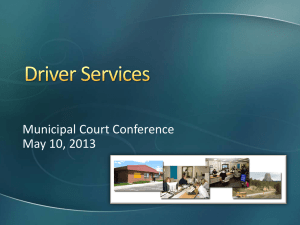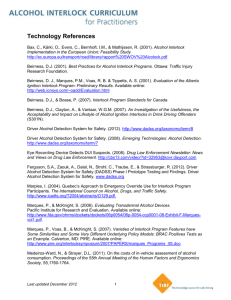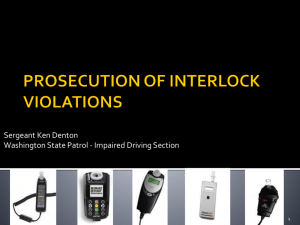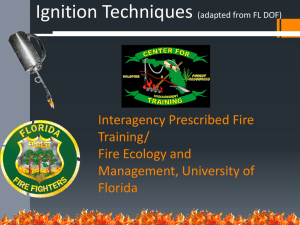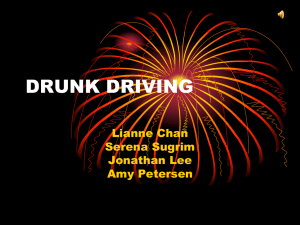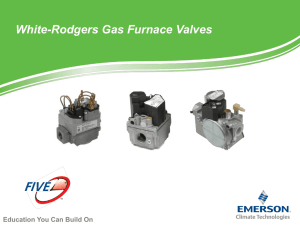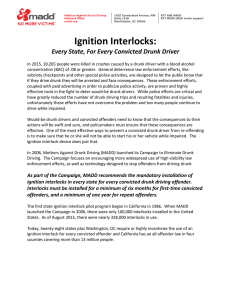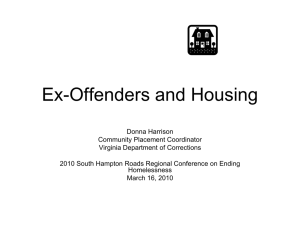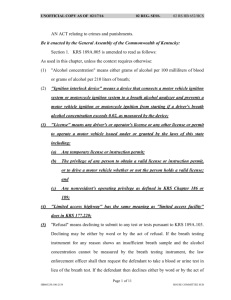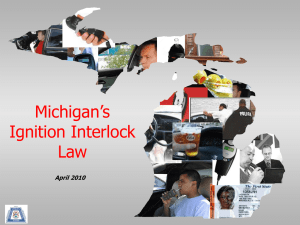Ignition interlock
advertisement
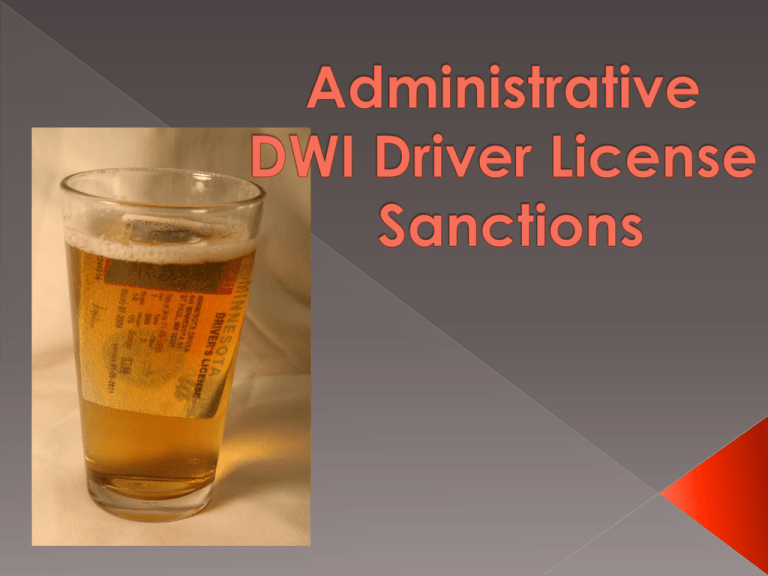
Comprehensive review of DWI administrative license sanctions Project Goal – Recommend effective sanctions that: › Reduce alcohol-related fatalities › Increase legal driving Two year project that included nearly 70 multi-disciplinary members Encourage use of effective technology › Ignition Interlock Benefits › Reduces DWI recidivism on average 64% while installed › Reduces the economic impact of impaired driving by $3 -$7 for every $1 spent › Provides a pathway for legal driving Limitations › Does not have long term effect on reducing DWI re-offense › Should be coupled with effective behavior changing program › Low participation rates Program Fees › $95.00 installation › $100.00 per month calibration › $50.00 removal Reduced › $25.00 Fees installation › $40.00 per month calibration › $25.00 removal Six devices have been certified Rolling retests are required Lockout is set at 0.02 AC level Required monthly calibration Two failures for alcohol detection will result in early recall Cameras Location within a 50 mile of nearly all participants All DWI Offenders Most significantly › People arrested for a DWI Offenders Likeliness of Installing Ignition Interlock Third or More 18% first-time with an AC level of 0.16 or above › All repeat offenders First-time Offenders < 0.16 26% Second-time Offenders 23% First-time Offenders at 0.16 or above 25% First-time Test Refusal 8% Approximately 30,000 DWI Arrests per Year Ignition interlock can be used to monitor DWI offenders › Cameras are required Reports can indicate a need for additional monitoring › Elevated and early morning AC tests can predict likelihood of future offenses Obtain release from client to receive reports Research driven sanctions › Swift and certain action for performing at-risk driving behavior › Targeted high-risk drivers First-time offenders - 80% of drinking drivers involved in a fatal crash had one or no previous DWI › Targeted high-risk time periods First 12 months after a DWI arrest Creates a pathway for legal driving › Nationally 70% drive illegally Lowers AC level for enhanced sanctions from 0.20 to 0.16 › Includes license plate impoundment Lengthens revocation time-periods › First-time offenders with an AC of 0.16 or greater = 1year › Second-time offenders with an AC less than 0.16 = 1 year › Second-time offenders with an AC level 0.16 or greater = 2 years Full driving privileges will be granted with installation of ignition interlock › No allowance for a limited license › Last three month must have no failed tests for alcohol detected by the II device prior to reinstatement Revocation periods are based on number of offenses › Third offense= three years, fourth offense= four years and fifth offense= 6 years › Limited driving privileges for first year › Full driving privileges for the remaining period of time demonstrating abstinence Ignition interlock is used to monitor chronic DWI offenders and demonstrate abstinence › Maintains treatment requirement › Eliminates 5 letters › Eliminates requirement of AA meetings Violations of “any use of alcohol or drugs invalidates driver license” restriction (nonDWI) › One year of ignition interlock › Chemical health assessment and comply with the requirements Removal of the “any use of alcohol or drugs invalidates driver license” restriction › Demonstrate 10 years of no alcohol or drug use › Restriction removed from the driving record and driver license card › 90% of those that will re-offend do so within 10 years Allows a person to drive a company owned vehicle during employment without ignition interlock › Not self employed › Not a rental car Employer will work with Driver and Vehicle Services to obtain variance Minn. Stat. § 171.306, subd. 4(b). Determining Positive Breath Alcohol Concentration of 0.02 or higher Reading => 0.02 and no retest within 35 minutes Failure Reading => 0.02 and retest within 35 minutes < 0.02 No failure Reading => 0.02 and retest within 35 minutes = > 0.02 Failure First and second time offenders • Failure within last 90 days will extend time an additional 90 days from the date of the reading Canceled Inimical to Public Safety • Report of a failure will restart the time and require a new assessment and application for a limited license. Violation Tamper Each time = 1 violation Circumvent Each time = 1 violation Bypass Each time = 1 violation Drives non ignition interlock vehicle Each time = 1 violation Violates condition of limited license Each time = 1 violation Failure to take a rolling retest 3 incidents within 6 months =1 violation Canceled IPS Only Fewer than 30 reads per month Each time = 1 violation Application of Violations (time does not run concurrent) 1st violation Additional 180 days 2nd violation Additional 1 year 3rd violation Additional 1 ½ years Subsequent violations Additional 1 ½ years Misdemeanor “drive, operate, or be in physical control of any motor vehicle that is not equipped with a functioning ignition interlock device.” The ignition interlock restriction is denoted on the back of the drivers license Minn. Stat. § 171.09, subd. 1(g). Violation of Tampering, Circumventing, or Bypassing Misdemeanor “who tampers with, circumvents, or bypasses the ignition interlock device, or assists another to tamper with, circumvent, or bypass the device” Exceptions: emergency purposes and mechanical repair Minn. Stat. § 171.306, subd. 6(b). Violation of Lend, Rent, or Lease Misdemeanor “lends, rents, or leases a motor vehicle that is not equipped with a functioning ignition interlock device certified by the Commissioner to a person with a license issued under this section knowing that the person is subject to the ignition interlock restriction.” Minn. Stat. § 171.306, subd. 6(a). Participants that enroll in the ignition interlock program prior to July 1 › Comply with law and program guidelines in place prior to July 1 Offenders that opt into the program after July 1 › Comply with new program requirements Once a person opts into the program they must complete the program Pass the DWI knowledge test, pay a $680 reinstatement fee and apply for a new driver’s license Sign a special review form › Required if this is your second offense Obtain an insurance certificate Sign an ignition interlock participation agreement Install an ignition interlock device Apply for an ignition interlock restricted license Apply for special registration license plates › Required if license plates were impounded Enroll in a treatment program as recommended by a chemical use evaluation. Pass the DWI knowledge test; pay a $680 reinstatement fee; apply for a new driver’s license and pay the application fee Sign an ignition interlock participation agreement Obtain an insurance certificate Sign a Last Use Statement Install an ignition interlock device Complete a limited license application Apply for special registration license plates
